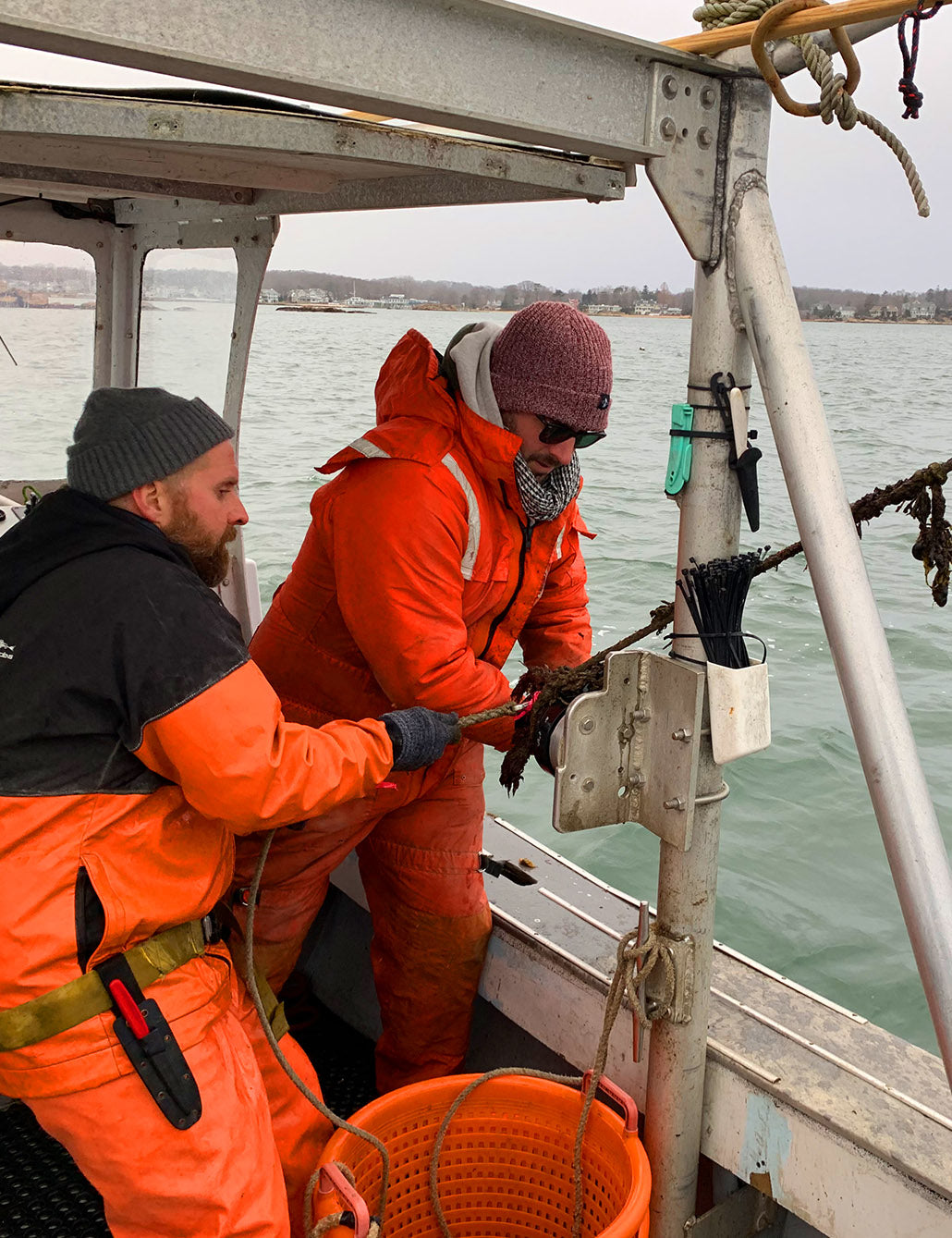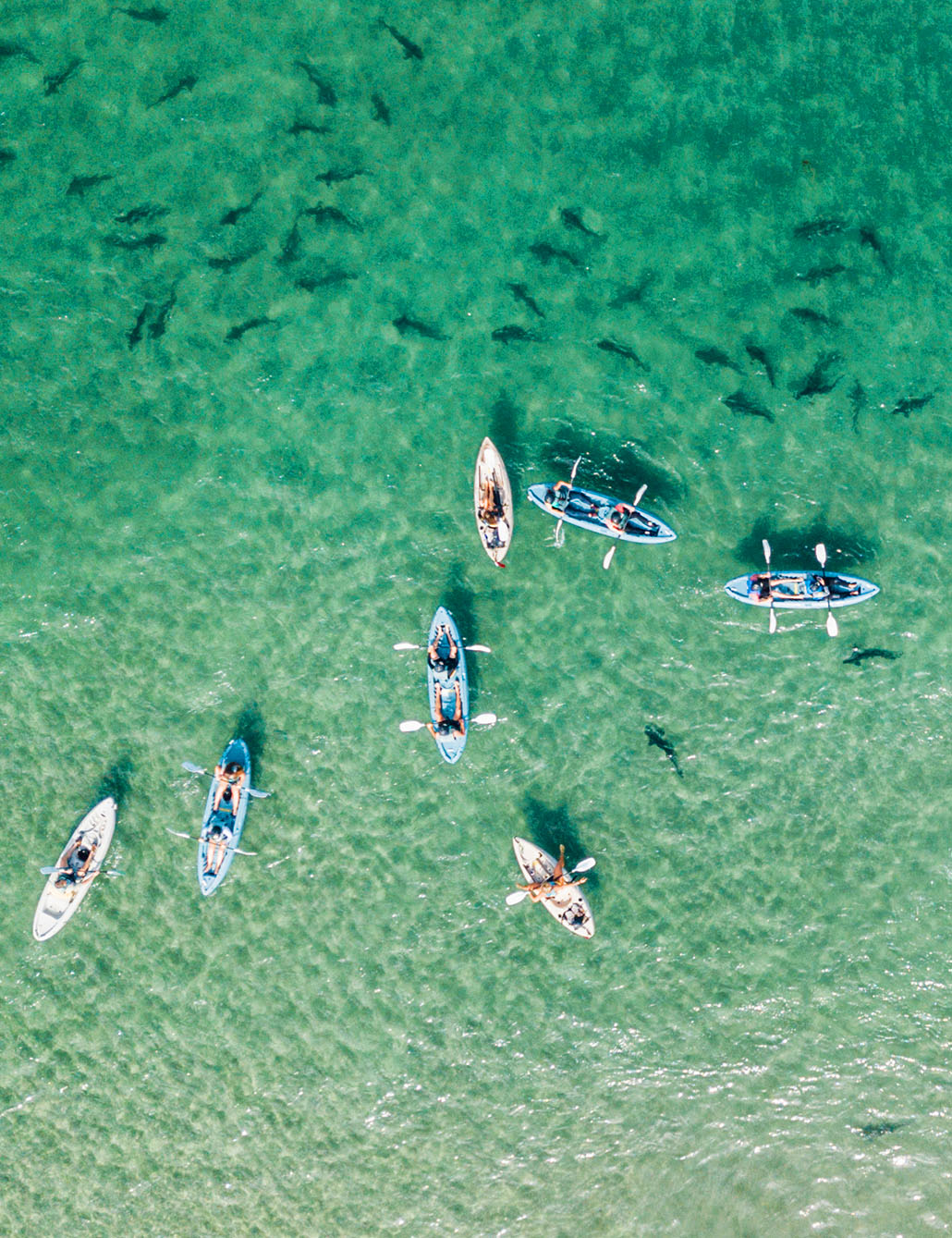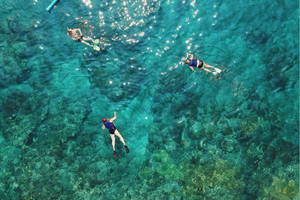Let's get the most fundamental thing out of the way first: Can you go snorkeling underwater?
If you learn to hold your breath evenly, close your lips, exhale to relieve the pressure in your ears, and use a snorkel, you can snorkel underwater.
Types of Snorkeling Gear
Traditional vs. Full-Face Snorkel Masks
First, you'll need to choose a snorkel mask, and you have two main options: a half-face mask that protects your eyes and nose and a full-face mask that conceals your entire face save for your eyes and nose.
The full-face snorkel mask is a fascinating innovation that has recently been introduced. The integrated snorkel atop has a one-way valve to keep water out while letting you breathe, and the vast dome that covers your whole face gives you an excellent field of vision.

Wet Snorkels vs. Dry Snorkels vs. Semi-Dry Snorkels
Now that we know what kind of mask we want, we can discuss snorkels. After all, we must take a moment to catch our breath.
The first snorkel was a simple open tube that linked your mouth to the air above the water (also called a wet snorkel). However, dry snorkels and semi-dry snorkels have recently entered the market.
Unless you are an experienced diver, I recommend using a typical wet snorkel unless you have been snorkeling for a long time and are incredibly comfortable with it. Finally, dry or semi-dry snorkels are preferable for most people.
Fins & Flippers
Clearly, this is the simple one. Fins or flippers are not essential for snorkeling, although they are pretty beneficial. They help you get to a higher altitude faster, stay there for longer, and get to the surface of the air faster.
Get some and put them to good use if you can. If not, it's not the end of the world; you'll have to put in a bit more effort to propel yourself down and back up.

How to Hold your Breath
To acquire enough oxygen when snorkeling, you'll need to practice deep breathing. If you breathe deeply while using a snorkel, you can be confident that every bit of air in the tube will be replaced with fresh air with every breath.
Snorkeling can cause mild weariness, dizziness, and headaches in some people. This is probably because they breathe in and out quickly, which lets "stale air" with more carbon dioxide build up in the tube.
Holding one's breath while snorkeling is dangerous and should only be done while diving. However, if you're just starting out in snorkeling, we wouldn't recommend using this approach.
-
When breathing via a snorkel, be sure to take long breaths to ensure that the air in the tube is being completely exchanged.
-
If you're snorkeling, maintain your mask and fins above water by streamlining your body and looking down and ahead.
-
One must train themselves to breathe "around" the water in the snorkel tank.
-
Get in the habit of repeatedly filling and cleaning your snorkel.
-
Altering your breathing pattern can help you gain mastery of your buoyancy (not through holding one's breath)
-
Don't swim using your arms as your primary means of balance in the water.

5 Tips to Dive Deeper
Diving is an activity that can be enjoyed in various ways and locations. Perhaps your first experience was in a swimming pool with dive goggles, or you’ve already accumulated hours of diving time under the sea.
At any level of diving, there are plenty of things to think about when getting ready to plunge into the water again. There are many different diving activities, each with its own challenges and risks.
Learning how to dive deeper is one such area that can offer even more enjoyment from this pastime. Whether you're a certified diver or just thinking about taking up diving as a recreational activity, here are some tips on how you can get deeper when diving.

Be Familiar With Where You are Snorkeling
Snorkeling is an activity that the majority of people only do on tropical holidays. However, despite the spectacular vistas, you might need to learn what lies beneath the sea or how the ocean responds to local weather patterns.
Spend time researching the area you'll be snorkeling in if you know you'll visit a specific island or nation. It can help you avoid danger, and you might learn helpful information to enhance your snorkeling adventure.
Practice in Shallow Water to Get Used to the Area and Your Equipment
If you've been out of practice with your snorkeling gear for a while, it's a good idea to take some time in shallow water to reacquaint yourself with the equipment and perfect your technique before venturing into deeper water.
You can practice your moves until you have mastered them, which will allow you to finally relax and enjoy your time underwater.

Try to Stay as Relaxed and Focused as Possible
Once you've made it into the water, several considerations exist. You have to think about a lot of things, like how you're breathing, how long you've been underwater, and where you are.
Maintaining calm and getting into a routine of what must be done is the surest way to get everything done on time. Before venturing into open water or diving below the surface, it is essential to spend some time in the pool to get into the groove.
Learn How to Read the Ocean
Although it may seem strange, numerous individuals who snorkel or dive can read the ocean. If you want to know what weather is on the horizon, look to the ocean.
The vast majority of surfers had this skill down pat before they ever went on a board, but snorkelers may also find it useful. If you're swimming in open water like the ocean, you need to pay attention to the wind, tide, and surf.
You Need to Be a Strong Swimmer
-
First and foremost, if you wish to snorkel in deeper water, you must be a strong swimmer. You'll need the ability to swim without the aid of a flotation device if you want to go diving to observe some things down there.
You'll need the ability to swim without a flotation device if you want to go diving to observe some things down there. If you know how to swim well, you probably also know how to breathe well enough to get back to the surface in time to take your next breath.








